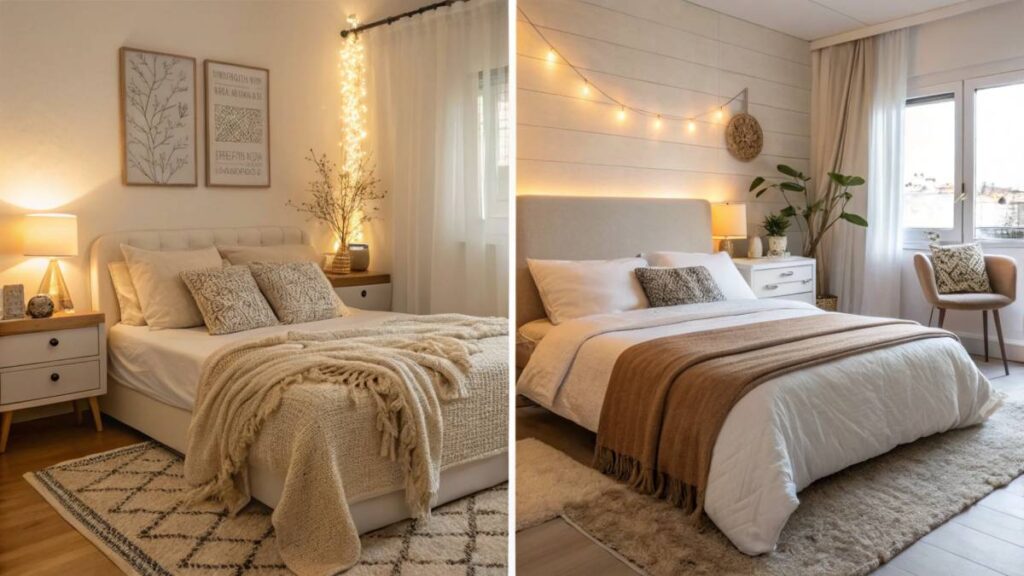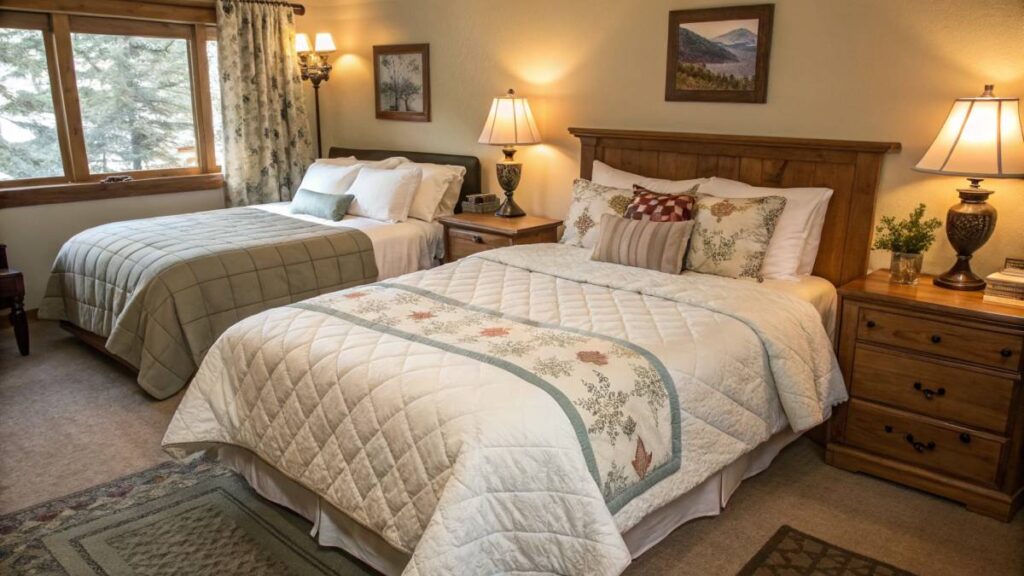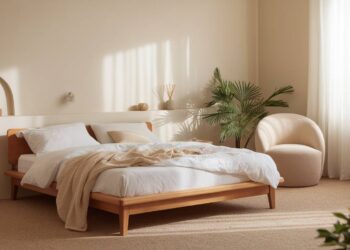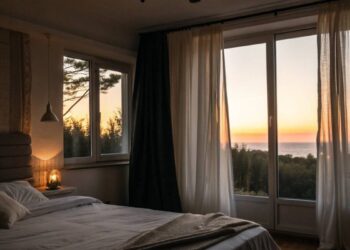In the quest for a restful night’s sleep, one factor often overlooked is the temperature of your sleep environment. Imagine sinking into a world where the comfort of cozy warmth meets the refreshing embrace of coolness. Striking the right balance can be the secret ingredient to achieving deep, uninterrupted rest. As our bodies naturally cool down in the evening, the ideal sleep temperature—a cozy 60-67°F—can either cradle you in comfort or lead you to a restless night. Join us as we explore the age-old debate of cozy or cool, all while seeking to find your perfect sleep temperature.
Key Takeaways
- Ideal sleep temperature ranges from 60-67°F for optimal sleep quality.
- Individual preferences vary based on metabolism, seasonal changes, age, and health conditions.
- Body temperature regulation is crucial for sleep cycles and overall sleep quality.
- Balancing temperature can help reduce night sweats and increase comfort.
- Lifestyle factors, including bedding and clothing choices, significantly affect temperature regulation during sleep.
Finding Your Sleep Temperature Sweet Spot
Getting a good night’s sleep isn’t just about fluffy pillows or a cozy mattress—it’s all about nailing that just-right room temperature. Your sleep quality hinges a lot on how warm or cool you keep things while you’re catching those Zs.
“Sleep is the best meditation.” – Dalai Lama
Understanding the Impact of Temperature on Sleep
Temperature is like the sleep whisperer. As bedtime rolls around, our body naturally cools itself down to ease us into sleep and keep us snoozing soundly. Try sleeping in an oven—or a freezer—and you’re asking for a restless night.
| Temperature (°F) | Sleep Quality Impact |
|---|---|
| Below 60°F | Brr! Might wake you up shivering |
| 60 – 67°F | Perfect for most folks, sweet dreams! |
| Above 67°F | Feels like a sweat session, not sleep |
Sticking to this sweet zone helps keep our internal clocks ticking smoothly and allows for deeper, more refreshing sleep. Curious about creating the ultimate sleep haven? Check out our article on sleep environment optimization for some great tips.

Factors Affecting Ideal Sleep Temperature
Not everyone’s sleep temperature “happy place” is the same. Different things can shape what’s just right for you:
- Metabolism: If you run hot, you might like things cooler.
- Seasonal Shifts: Winter chills or summer heat waves can prompt a thermostat tweak.
- Age: Senior sleepers often lean toward toastier temps.
- Health Tweaks: Things like menopause can make you more temperature-sensitive.
| Factor | Influence on Sleep Temperature Preference |
|---|---|
| Metabolism | Quick burners might need a cooler room |
| Seasonal Changes | Crank up the heat in winter, cool down in summer |
| Age | Older folks often cozy up to warmer settings |
| Physical Health | Certain conditions may lead to temperature adjustments |
Getting clued into these factors can make your bed feel like a paradise tailored just for you. For more ways to spruce up your sleep setup, peek at our guide on the perfect sleep environment.
Tweaking these details can revolutionize your nighttime routine, helping you wake up ready to conquer the day.
The Science Behind Sleep Temperature
Understanding how temperature affects sleep is crucial for anyone wanting to sleep like a baby. By diving into how our body handles temperature and how our internal clock influences sleepy-time preferences, we can get closer to finding that magic sleep number.

Body Temperature Regulation During Sleep
At night, your body cools off a bit – it’s all part of the snooze cycle. As bedtime nears, your core temp takes a little dip, hinting it’s time to hit the hay. This chill shift helps you drift into dreamland and keeps you there, especially in those deep sleep stages.
| Time of Day | Avg Body Temp (°F) |
|---|---|
| Morning | 98.6 |
| Afternoon | 98.9 |
| Evening | 98.2 |
| Night | 97.9 |
At night, your body lets the heat go, which is awesome for catching some quality z’s. Cranking the AC a notch can help keep that cool vibe, which might be a game-changer if you’re tossing and turning all night. Want more tips on crafting a dreamy sleep setup? Check out the perfect sleep environment page.
Circadian Rhythms and Sleep Temperature Preferences
Your body’s internal clock, also known as circadian rhythms, is a key player in sleep patterns and temperature likes. These rhythms get their cues from the outside, like when it’s light or cool out, and can either tuck you in or keep you tossing.
As darkness sets in, your brain sprinkles a little melatonin magic dust, making you feel all snug and sleepy. This also comes with a temperature dip. But as the morning sun peeks in, your temp starts to rise, gearing up for the day.
| Circadian Phase | Temp Change (°F) |
|---|---|
| Early Evening | Small Dip |
| Night | Bottom Out |
| Early Morning | Warming Up |
Getting a grip on these temp shifts can help tweak your sleep surroundings. Keeping your room cool at night lines up with your natural bedtime temperature drop, helping you sleep deeper. Curious how light plays into this? Check out our page on light and sleep quality.
“The greatest weapon against stress is our ability to choose one thought over another.” – William James
By really getting into the nitty-gritty of how your body and its rhythms manage temperature, you can work towards that sweet spot for sleeping. This can help you fine-tune your sleeping digs and snag a solid night’s rest.
Cozy vs. Cool: Pros and Cons
Getting the right snooze setting is the secret sauce for catching some quality z’s. We’re diving into why you might wanna snuggle up in a warm room versus chilling in a cool one.

Benefits of a Cozy Sleep Environment
When you tuck yourself into a warm room, it’s like a big ol’ blanket of safety. Loads of folks swear by it, especially when it’s frosty outside. A toasty setting helps ease out those kinks and knots and gives stress the boot, leading to some sweet dreams.
- Muscle Relaxation: Warmth can be just what the doctor ordered if you’re dealing with sore muscles or achy joints.
- Psychological Comfort: That snug-as-a-bug feeling can soothe your mind, making it a breeze to drift off.
- Reduced Anxiety: Staying cozy might keep jitters at bay, helping you feel as cool as a cucumber.
Benefits of a Cool Sleep Environment
Rolling out the red carpet for the cold can actually pay off big time in terms of shut-eye. Cooler temps often make it easier for your body to get to snooze town and stay there.
- Improved Sleep Quality: Sleeping in cooler climes often means deeper rest meets fewer interruptions.
- Fall Asleep Faster: When the room’s cool, so are you, making falling asleep quicker.
- Reduced Risk of Night Sweats: A cooler space helps keep you from waking up in a puddle.
Drawbacks of Each
Neither option is all sunshine and rainbows. Each comes with its own set of snags.
| Sleep Environment | Drawbacks |
|---|---|
| Cozy | – Toasty may turn into roasty – Unwanted night sweats – Sleep can get messy when it’s too warm |
| Cool | – So cold you might struggle to nod off – Can be rough for folks with stuff like arthritis – Layering up could become your new jam |
Getting clued in about what works for you can lead to top-tier shut-eye. If you’re curious about making your nap nook just right, check out our guide on sleep environment optimization.
Room vibes and bedding picks are dealmakers or breakers for sleep. Finding that sweet spot that feels just right is the ticket to restful slumber. Dive into more wisdom with our articles on perfect sleep environment and best bedding for sleep.

Tips for Creating Your Ideal Sleep Environment
Getting that top-notch sleep is more important than a five-star rating for a hotel stay. Here’s how you can transform your snooze space into a dream catcher’s paradise.
Adjusting Room Temperature
Getting the temperature just right is like finding that sweet spot on your sleepy sweet tooth. You’re shooting for comfy, not too hot or too icy, between 60-67°F. If you’re the type who wakes up in a sweat or shivers, using a fan or AC to chill things out or a heater to warm up can be a game changer.
| Temperature Range | Sleep Quality Impact |
|---|---|
| Below 60°F | Brrr! Too cold, might keep you tossing |
| 60-67°F | Perfect! Hit the hay happily |
| Over 67°F | Yikes! Too hot, you’ll be counting sheep all night |
Using Bedding Wisely
Your bedding is your cocoon for sleep bliss. Time to switch up your sheets like you swap your wardrobe for the weather. Think light and breezy for the heat, cozy and snuggly when it gets chilly.
- Tweak for seasons: Cotton sheets for summer, flannel or fleece when Jack Frost visits.
- Layer it up: Keep extra blankets within arm’s reach to toss on or off without a hassle.
- Consider smart fabric: Moisture-wicking materials are a safe bet—they keep the sweat at bay, making your night tales much smoother.
Want more sleep hacks? Head over to our perfect sleep environment guide for details.
Snagging some good shut-eye is easier with the right room temperature and the best bedding choices. Check out our best bedding for sleep for cozy ideas, and get seasonal tips from our seasonal sleep tips right now!
Lifestyle Factors
Impact of Clothing Choices
The threads you slip into before hitting the hay can make or break a good night’s sleep. Some materials are better at keeping your body comfy. Fabrics like cotton and bamboo are your go-tos since they’re all about that light, breathable vibe, helping you stay at that sweet spot temperature all night long.
And hey, don’t pile on the layers—too many PJs can have you steaming like a sauna, while too few might leave you shivering. Finding your comfort zone with just the right amount of clothing can seriously up your sleep game. Need more on making your sleeping quarters zen? Check out our piece on declutter for better sleep.

Considerations for Hot or Cold Sleepers
We’re all about personal sleep climates—some folks are human ovens, others are popsicles! Knowing which team you’re on can help tailor your sleep setup for primo snooze levels.
Hot Sleepers:
- Keep it breezy with lighter blankets and a nippy room.
- Wear fabrics that whisk away moisture to avoid waking up like you just ran a marathon.
- Fans or A/C can be your sleepy-time sidekick.
Cold Sleepers:
- Pack on those cozy blankets or duvets to keep that chill at bay.
- Layer up with snuggly sleepwear or thermals.
- Heated blankets or pads can be dreamland getaways.
Figuring out your natural sleeping climate lets you tweak your sleep zone for maximum shut-eye. For extras that cater to hot or cold sleepers, peek at seasonal sleep tips.
Additional Factors to Improve Sleep Quality
Sure, temperature matters, but lots of other lifestyle tweaks can peer into your nighttime harmony.
- Sound: Noise can calm you down or crank you up, depending on what it is. Try white noise or earplugs if you’re on the sensitive side. Find out about the best noise for sleep.
- Light: Light levels mess with your internal clock, so blackout curtains or sleep masks could be game changers. Get the scoop on blackout curtains effects.
- Air Quality: Good, clean air is your sleep’s BFF. Regular airing out and air-scrubbing plants can freshen up your slumber space. Dig into the details with best plants for sleep.
- Bedding and Mattress: Comfy bedding and a solid mattress can change sleepytime for the better. Dive into the best bedding for sleep and the best mattress for sleep.
| Factor | Considerations |
|---|---|
| Sound | White noise, earplugs |
| Light | Blackout curtains, sleep masks |
| Air | Fresh air, air-purifying plants |
| Bedding | Quality, comfort |
| Mattress | Supportive, appropriate firmness |
Souping up your sleep setup with personal touches and external tweaks can have you sleeping like a baby—no pacifier required. For the lowdown on crafting your sleep haven, scope out our guide on perfect sleep environment.
Main Tips
- Adjust your thermostat to achieve the ideal range of 60-67°F for sleep.
- Choose breathable fabrics for summer use and warmer materials for winter comfort.
- Stay aware of underlying health conditions that may affect your temperature preferences.
- Personalize your sleep setup by considering the layout, lighting, and noise in your bedroom environment.
Final Thoughts
As you experiment with your sleep environment, take note of what works best for you, recognizing that finding your ideal sleep temperature is a personal journey. Whether you lean towards a cozy atmosphere or a cool haven, your unique preferences and conditions will determine the winning formula for restful nights. With continued exploration of bedding options, room settings, and lifestyle choices, you’ll discover your ultimate path to rejuvenating sleep.
Conclusion
Navigating the temperature debate—cozy versus cool—can transform your nightly routine and improve your overall sleep quality. Striking a balance between warmth and coolness is essential; while a cozy room may provide comfort and relaxation, cooler temperatures foster deeper sleep and reduce disturbances. Factors such as metabolism, age, and health conditions heavily influence your ideal sleep environment, leading to personalized adjustments. Concurrently, light, sound, and air quality are vital elements to integrate for optimal sleep conditions. By understanding these factors, adopting the right bedding, and adjusting clothing choices, you can create your dream sleep sanctuary. With the right temperature settings and environment modifications, you’ll wake up rejuvenated and ready to seize the day.
FAQs
What is the ideal sleep temperature?
The ideal sleep temperature for most people is between 60-67°F (15-19°C) to promote restful sleep.
How does temperature affect sleep quality?
Temperature impacts our body’s ability to regulate sleep cycles; too hot or too cold can cause awakenings and restlessness.
Can bedding choices influence sleep temperature?
Yes, lighter materials for warmer months and heavier fabrics for colder months can help maintain optimal temperatures.
What adjustments can I make for warm summer nights?
Using fans, lighter sheets, and breathable clothing can help make your sleep environment more comfortable in the heat.
How can I improve sleep quality beyond temperature?
Focusing on noise levels, light control, and air quality can significantly enhance your sleeping environment.








